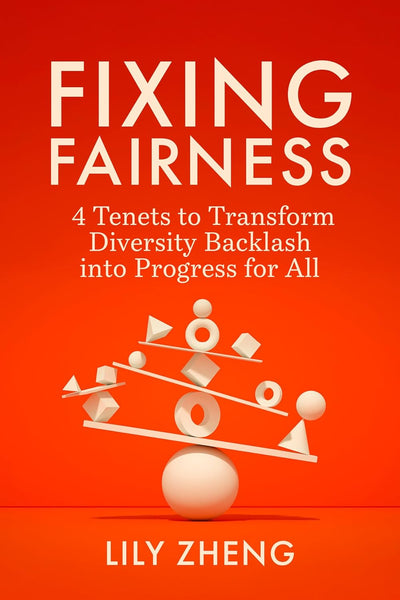Skibidi Toilet, Boomer Ellipses, and the Roman Empire: How Influencers Use Language To Capture Your Attention
Human language has been evolving since the first word was spoken. What's new is how online memes and trends take off and enter our everyday lexicon. The Etymology Nerd, Adam Aleksic, examines the tricks content creators use to grab our attention online and how it is changing how we talk offline.
The new structure of social media has given rise to entirely new accents, dialects, grammatical rules, and morphological processes.
It’s driven by community guidelines, but also by the nature of virality, the tricks influencers use to grab your attention, and the way your “recommended” feed is formatted. I can see this happening as a linguist studying social media, but also feel it daily as a content creator who uses these tricks to capture your attention.
I’ve always found it fascinating that we talk about attention as something that is “captured” and “held” before eventually being “lost.” To be captivating, something must hold you captive, the implication being that your attention was seized and could escape at any moment. There’s a sense of scarcity, of ephemerality, and in the internet age there’s a real pressure on those who want to hold your easily fractured attention.
In 1971, the Nobel Prize–winning political scientist Herbert A. Simon coined the phrase “attention economy” to describe this phenomenon. In his view, attention was a limited resource to be allocated between competing stimuli in an information-rich environment. Since then, the concept* has been extended to numerous applications in marketing and psychology,1 but the most salient example is in social media. As soon as a video bores you, a quick flick of the finger will send it into oblivion, instantly conjuring up a new video to entertain you instead. That means that influencers are quite literally competing with each other for your attention. The second your mind starts to wander, you scroll. This hurts our retention rate, a measurement of how long people watch our videos, and retention rate is a critical factor in those videos being promoted by the algorithm (built to keep people on the app for as long as possible). Hence, if a video is bad at getting your attention, it won’t even be recommended to you in the first place.
*Coming from the Latin word for “to take,” implying that you take in a concept. Think about how we talk about “grasping” a concept today.
Attention is always important if you want to share a message, but the way to hold it changes across mediums. If I’m delivering a speech to an auditorium of people, I don’t have to rely on the same tricks as I do online. I have them captive: They can’t scroll away. Same with books. I had to draw you in with a flashy jacket or interesting description, but now that you’re reading, I have access to a different, longer kind of attention where I can lend nuance to my opinions without the fear that you’ll immediately put this down for another book the moment I write a lackluster sentence.
Things are different online, where I feel like I’m fighting a constant war for your attention. I carefully script out all my videos to maximize the addictiveness of each sentence. Beyond the initial hook, I sneak in little “microhooks” to everything I say, making sure I recapture your attention if it does happen to drift. Even my content choices and presentation styles are subordinated to the pressures of social media. No matter how interesting I find the etymology of the word “concept,” I know that a video on “skibidi toilet” will do better, because of the way that the algorithm amplifies trends.
Even when I did make a video on the etymology of “skibidi,” I rage-baited my audience to a certain extent. I knew some people would be upset about the latest generational slang, which would make them hate-watch and comment. For those who liked consuming skibidi content, it instead click-baited them, by framing the video as a form of entertainment that they had reliably enjoyed in the past. All this played further into an ongoing social trend, since I knew people were fascinated by that word at the time.
In fact, failure to adapt to trends is an incredibly dangerous pitfall for influencers. It’s very easy to lose touch with the ever-changing algorithm unless you’re constantly keeping your finger on the pulse. I have several good friends who racked up millions of followers in the early days of social media, but are unable to get more than a few thousand views on their videos today because they either took a break or didn’t keep up with the changing times. In my first year on TikTok alone, I watched the platform slowly break free from its short Vine-like style as the algorithm began pushing videos over a minute in length. This was a deliberate decision by ByteDance to begin chipping away at YouTube’s monopoly on long- form video, and if I hadn’t responded by switching to longer-form videos, my TikToks would have received progressively fewer views until I potentially lost my audience entirely. Remember that the algorithm reflects the creative direction of social media companies. Not conforming or simply not being aware of those directions results in your content performing worse.
I experienced this firsthand on Reddit. Since its algorithm switched away from the simple 2016 formula to its current recommendation-based AI system, I’ve found that I’ve completely lost the ability to understand what will do well on the website. My etymology infographics, which would easily get tens of thousands of upvotes when I was familiar with the post-ranking methodology, now flounder in the hundreds. The artistic and educational quality of my content hasn’t declined, but the algorithm is now rewarding new metrics and it seems I’m out of touch.
All this reinforces the notion that creators must mold ourselves to the algorithm to have the best chance at capturing your attention. Some linguistic techniques, like the superlatives or second-person pronouns, stay fairly constant. We often figure these out through trial and error or by looking at our video analytics. Other techniques, like use of the word “skibidi,” fluctuate with the algorithm, and we hop onto them by observing other popular videos, then replicating them in our own way.
In many cases, creators are additionally incentivized to come up with their own catchy terms or phrases, since they can grab people’s attention and spawn interaction. Along the lines of clickbait or rage-bait, this growing phenomenon is specifically described as trend-bait— saying things specifically in the hopes of becoming a viral trend. A prototypical example is “girl dinner,” coined by the TikToker Olivia Maher to describe a humorously unhealthy replacement for a formal meal. Following Olivia’s video, it became a viral trend for girls to talk about their own version of “girl dinner.” Many of these reactions took the form of comments or “stitches,” generating more engagement and relevance for Olivia. At a certain point, a “girl dinner” song was written, and the meme took on a second life, but anyone curious about the origin of the trend could go back and rewatch the first video, presumably earning Olivia more income with each view.
I’ve also done this: In early 2024, I went viral for talking about the “boomer ellipses,” a phrase I coined to describe how older people use different punctuation in their messages. Since I said the phrase confidently, but nobody knew it at the time, the wording drew in more people wanting to know about a phenomenon they thought the had somehow missed out on. Similar phrases go viral every week whenever creators try to start a new trend, from “Roman Empire” to “beige flag” to “orange peel theory” (if you’re unfamiliar with these, congrats for not being chronically online in 2023).
Even without an explicit effort to “trend-bait,” creators know that using certain phrases will help their video do better. In one of my viral etymology videos, for example, I explained how the adverb “low-key” functions “kinda like the word kinda, or sorta like the word sorta.” I specifically scripted out the phrase like that because I knew it would generate interaction, and it did: Hundreds of people ended up commenting on the wordplay, boosting my video in the algorithm and helping me rack up more than three million views across platforms. I’ve similarly noticed many other creators successfully use clever turns of phrase online, simply because we know it works.
In one viral video, the TikTok creator Khai Bellamy recounts the story of how her dad persuaded her family to fly on a budget airline. It’s an otherwise normal story, but Khai’s word choice drives it home. Each sentence would function as an amazingly wry one-liner, from describing the plane as “a closet with wings” run by “Kendall Jenner airlines” to talking about how her family subsequently “Amish shunned” her dad while her mom put him on “marital probation.” Khai, who has amassed more than 2.6 million followers for her addictively engaging story-time videos, tells me that this is very much intentional. Before filming a video, she thinks of certain jokes or analogies she knows she wants to include, since wordplay captures viewers’ attention and consistently generates comments from people quoting their favorite part of the video. She also sees it as a way to keep the video “fluid, fun, and engaging,” which helps with viewer retention.
Evidently, it pays to experiment linguistically. In some cases, like with “Roman Empire,” these experiments worm their way into our lexicon before anyone notices. This happens much more frequently than you might expect: Much of our new slang is emerging from people finding something catchy online. I’ve watched many of my friends criticize each other for “talking like TikTok,” referring to a slew of grammatical constructions popularized as meme-based phrasal templates online:
It’s giving _____
It’s the _____ for me
The way you _____
Not you doing _____
These sentence formats* have spread beyond social media because there’s something underlyingly catchy about them. Certain turns of phrase are more distinctive than others, in a way that’s psychologically satisfying to us. These phrasal templates intrigued us, first in the online space and then eventually offline once they were repeated enough by others around us.
* Like many linguistic conventions popularized online, borrowed from African American English.
Even individual words like “skibidi” and “side-eye” need to bait you somehow if they are to become viral. It doesn’t matter what kind of bait is used or what psychological appeal it uses. If this is a fishing metaphor, the way I reel you in is first by hooking your attention.
The connection between the internet and declining attention rates has long been studied and commented on. We know we’re facing a full-blown social epidemic. People are reading less, students are struggling to remain on task, and we’re all checking our phones way more than we should be. Even while writing this book, my “research” on TikTok has repeatedly devolved into scrolling as I quickly get sucked into the app’s attention sinkhole. Nevertheless, I still find it shocking how easily this turns into a positive feedback loop. As our attention spans get shorter, advertisers and creators must compete harder for views, which leads to a constant and increasing bombardment of stimuli that ultimately causes our attention spans to decline further (and further escalates the competition).
It’s a zero-sum game against every other creator on the app, and success can come down to the smallest details. Each additional attention-grabbing strategy exponentially contributes to a video’s success. At a certain point, videos are recommended simply because they capture our attention. This is an online manifestation of a behavioral phenomenon called the Matthew effect: Essentially, content that is slightly better at capturing your attention will perform exponentially better on social media.
Part of this is a normal mathematical principle of virality. If a post is shared 20 percent less, it’s going to be seen not by 20 percent fewer people but by 90 percent fewer, because fewer people will even be given the chance to share it in the first place.2 On video platforms, this 20 percent difference determines whether a video gets a hundred thousand or a million views, and that’s before we consider human behavior in information cascades. People on social media observe the choices made by those before them and then react to that. If a video has no views or likes, you’re more likely to scroll by, even if it’s an excellent video, simply because you see it’s not getting much engagement and assume it’s bad.
Clearly, attention begets more attention, but all of this is exacerbated by the algorithm, which recommends content by predicting how likely people are to engage with it. If a post is better at capturing and holding an audience in the first few minutes, it’ll be pushed to far more people in the next few minutes, kick-starting the positive feedback loop.
The resulting difference is huge, and a very small percentage of social media posts dominate a very large percentage of our attention. Since the posts that work often employ specific tactics, like using certain phrases or keywords, those tactics will be self-perpetuated the same way attention has been. Any distinction between trend-bait, clickbait, rage-bait, and regular words dissolves into the parade of linguistic tricks that emerge (and occasionally stick around) with each successive internet fad.
At the risk of sounding biased, I believe that influencers aren’t solely at fault here. Social media platforms are doing the same thing as creators, but on a macro scale. They’re trying to keep your attention through any means possible, directly building this conduit for the most attention-grabbing language to reproduce from creator to consumer. Algorithms are the culprits, influencers are the accomplices, language is the weapon, and you, dear reader, are the victim.
Adapted from Algospeak: How Social Media Is Transforming the Future of Language by Adam Aleksic. published by Knopf. Copyright © 2025 by Adam Aleksic. All rights reserved.
Endnotes
1. Chantal Carpentier, “New Economics for Sustainable Development: Attention Economy,” United Nations Economist Network, March 23, 2023.
2. Arvind Narayanan, “Understanding Social Media Recommendation Algorithms,” Knight First Amendment Institute at Columbia University, March 9, 2023.
About the Author
ADAM ALEKSIC is a linguist and content creator posting educational videos as the “Etymology Nerd” to an audience of more than three million. As a linguistics student at Harvard College, he founded and served as president of the Harvard Undergraduate Linguistics Society. He’s discussed online language on NPR and repeatedly contributed to The Washington Post, and his work has been mentioned in The New York Times, The Economist, and The Guardian. He’s lectured on language and social media at Stanford, Yale, Georgetown, and other top universities, including a TEDx talk at the University of Pennsylvania. Aleksic is based in New York City, where he spends a lot of time scrolling TikTok for “research.”








